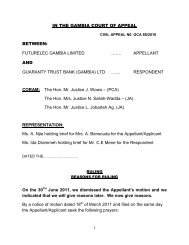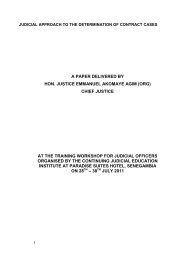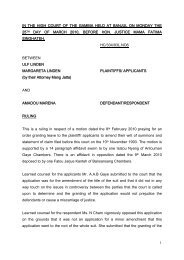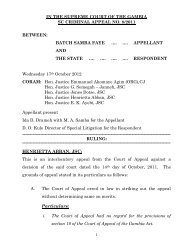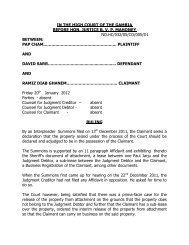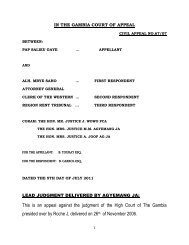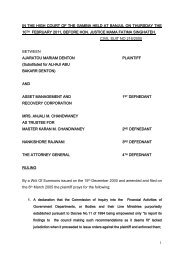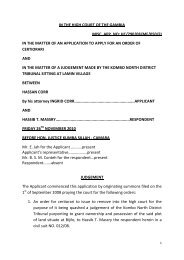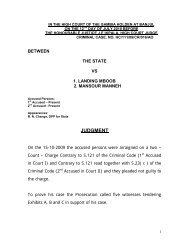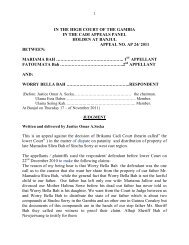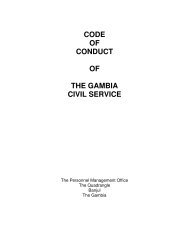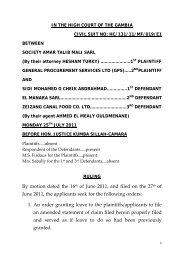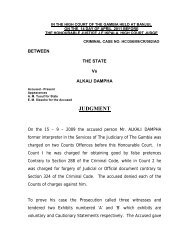Preface
Preface
Preface
You also want an ePaper? Increase the reach of your titles
YUMPU automatically turns print PDFs into web optimized ePapers that Google loves.
69<br />
(g) The defendant is then asked to respond to same by either admitting the claim<br />
or denying same,<br />
(h) Where the defendant admits the claim the case ends there and judgment is<br />
entered for the plaintiff based on the admission,<br />
(i) Where the defendant denies the claim, the plaintiff is asked to produce his<br />
witnesses which, in pecuniary claims or actions based on claim of properties<br />
of monetary value, must be:<br />
(a) Two male witnesses or;<br />
(b) One male witness and two female witnesses or;<br />
(c) One male accompanied with the claimant's oath or;<br />
(d) Two female witnesses and claimant's oath,<br />
The claimant’s oath in (c) and (d) above complements the second witness<br />
which cannot be found by the plaintiff to establish his claim before the court.<br />
5. Where the plaintiff has proved his case as outlined above, the defendant is<br />
asked to defend the case by calling witnesses to disprove or dislodge the<br />
plaintiff's claim in line with the procedure for proof adopted by the plaintiff<br />
above.<br />
6. After this the court then analyses the totality of the evidence adduced by the<br />
two sides and passes its judgment accordingly. See on this the case of<br />
Dahiru Gaya Vs Uwani (2007) 3 S. L. R. PT IV page 138.<br />
What distinguishes a Cadi from other stakeholders in the arena of dispute<br />
settlement is the evidence upon which his decisions are based and founded. Where<br />
this distinctive feature of proof is lacking from a court proceedings, the<br />
proceedings of that court, cannot be called a judicial proceedings, and no matter



